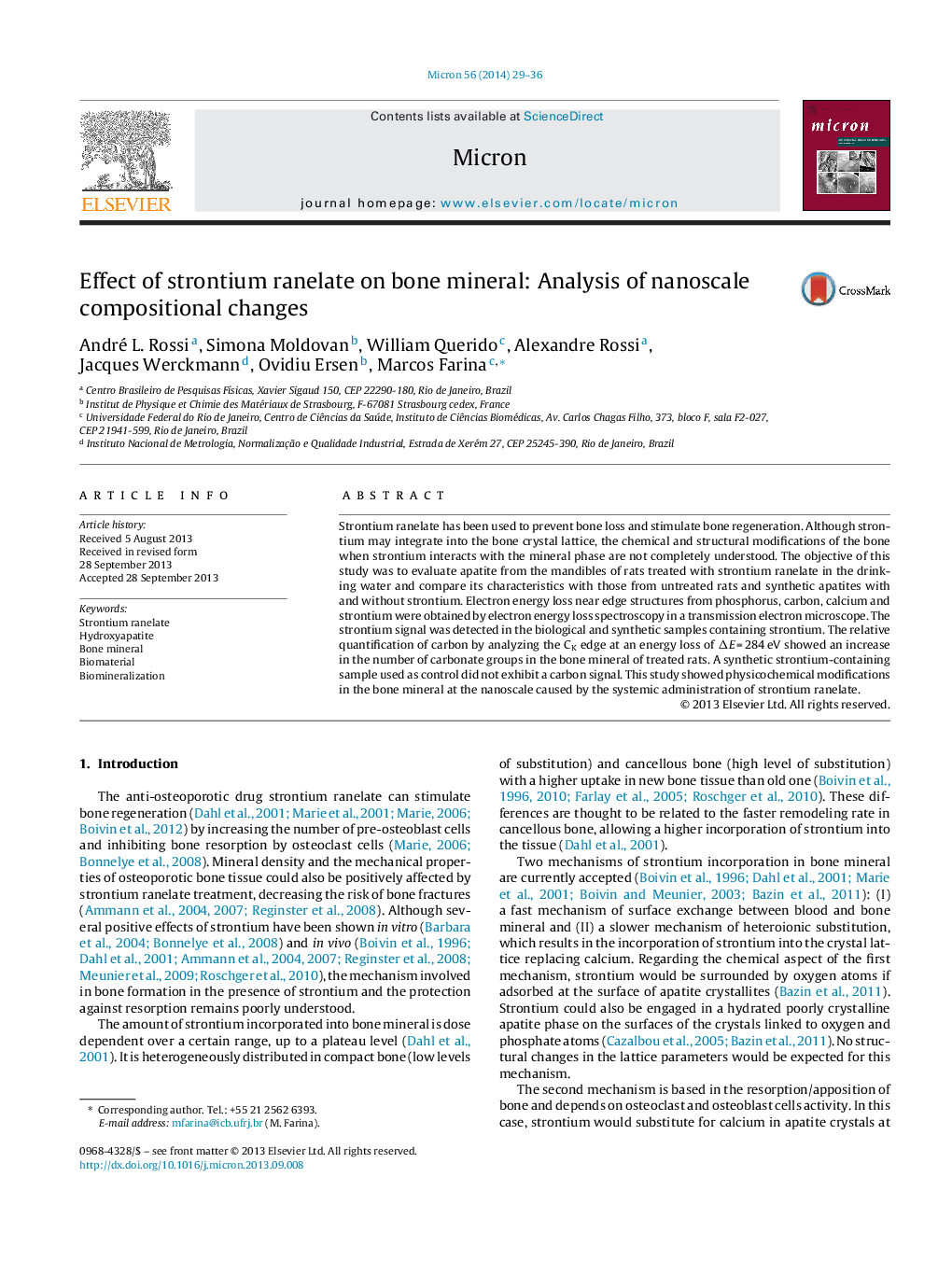| Article ID | Journal | Published Year | Pages | File Type |
|---|---|---|---|---|
| 1589050 | Micron | 2014 | 8 Pages |
•Mineral from the mandible of rats treated with strontium ranelate is analyzed.•Biological samples are compared with synthetic apatites with and without strontium.•Strontium is detected in bone nanocrystals from treated rats.•Strontium ranelate treatment increases the carbonate content of bone mineral.
Strontium ranelate has been used to prevent bone loss and stimulate bone regeneration. Although strontium may integrate into the bone crystal lattice, the chemical and structural modifications of the bone when strontium interacts with the mineral phase are not completely understood. The objective of this study was to evaluate apatite from the mandibles of rats treated with strontium ranelate in the drinking water and compare its characteristics with those from untreated rats and synthetic apatites with and without strontium. Electron energy loss near edge structures from phosphorus, carbon, calcium and strontium were obtained by electron energy loss spectroscopy in a transmission electron microscope. The strontium signal was detected in the biological and synthetic samples containing strontium. The relative quantification of carbon by analyzing the CK edge at an energy loss of ΔE = 284 eV showed an increase in the number of carbonate groups in the bone mineral of treated rats. A synthetic strontium-containing sample used as control did not exhibit a carbon signal. This study showed physicochemical modifications in the bone mineral at the nanoscale caused by the systemic administration of strontium ranelate.
